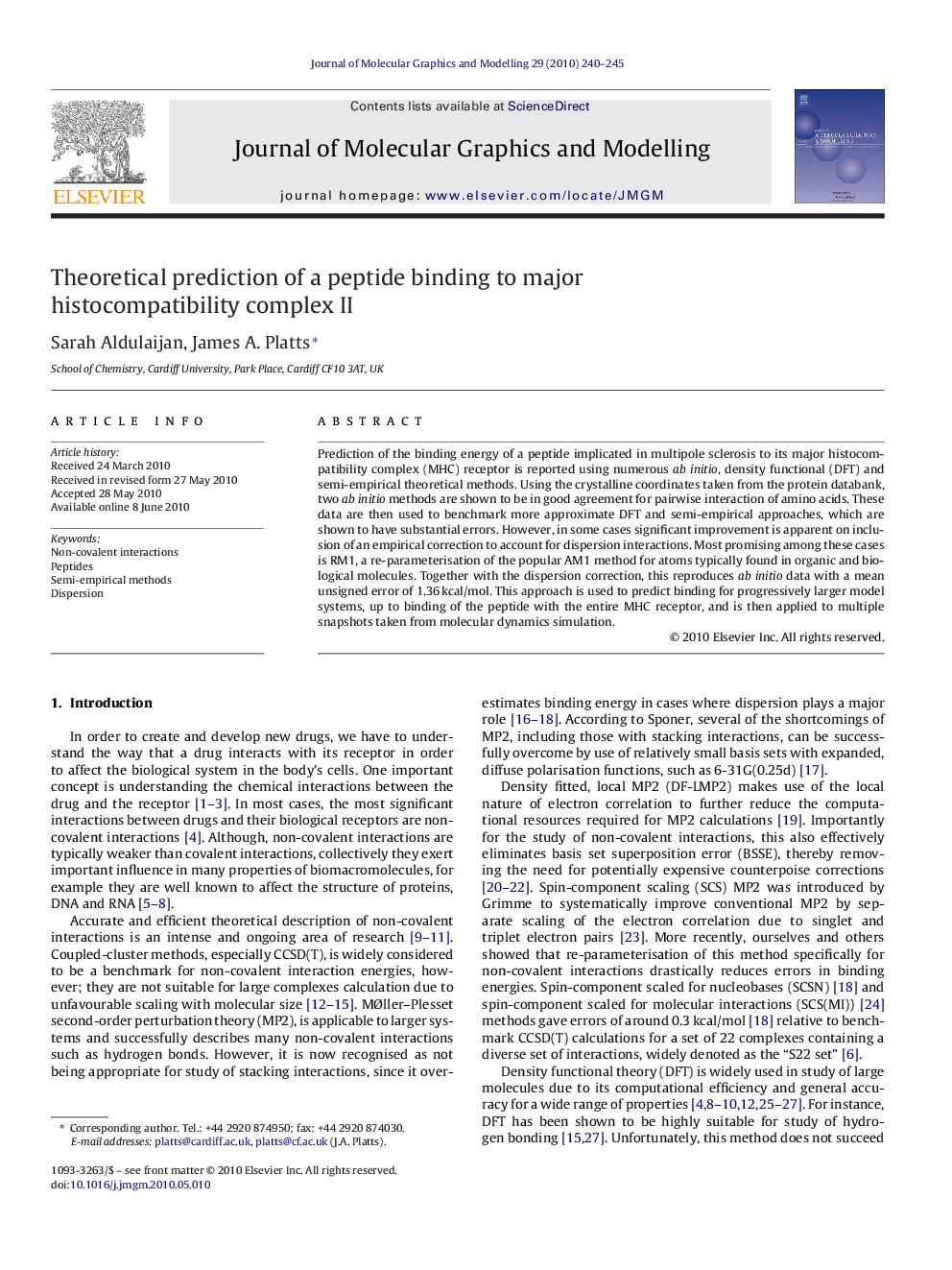| کد مقاله | کد نشریه | سال انتشار | مقاله انگلیسی | نسخه تمام متن |
|---|---|---|---|---|
| 442935 | 692434 | 2010 | 6 صفحه PDF | دانلود رایگان |

Prediction of the binding energy of a peptide implicated in multipole sclerosis to its major histocompatibility complex (MHC) receptor is reported using numerous ab initio, density functional (DFT) and semi-empirical theoretical methods. Using the crystalline coordinates taken from the protein databank, two ab initio methods are shown to be in good agreement for pairwise interaction of amino acids. These data are then used to benchmark more approximate DFT and semi-empirical approaches, which are shown to have substantial errors. However, in some cases significant improvement is apparent on inclusion of an empirical correction to account for dispersion interactions. Most promising among these cases is RM1, a re-parameterisation of the popular AM1 method for atoms typically found in organic and biological molecules. Together with the dispersion correction, this reproduces ab initio data with a mean unsigned error of 1.36 kcal/mol. This approach is used to predict binding for progressively larger model systems, up to binding of the peptide with the entire MHC receptor, and is then applied to multiple snapshots taken from molecular dynamics simulation.
Journal: Journal of Molecular Graphics and Modelling - Volume 29, Issue 2, September 2010, Pages 240–245